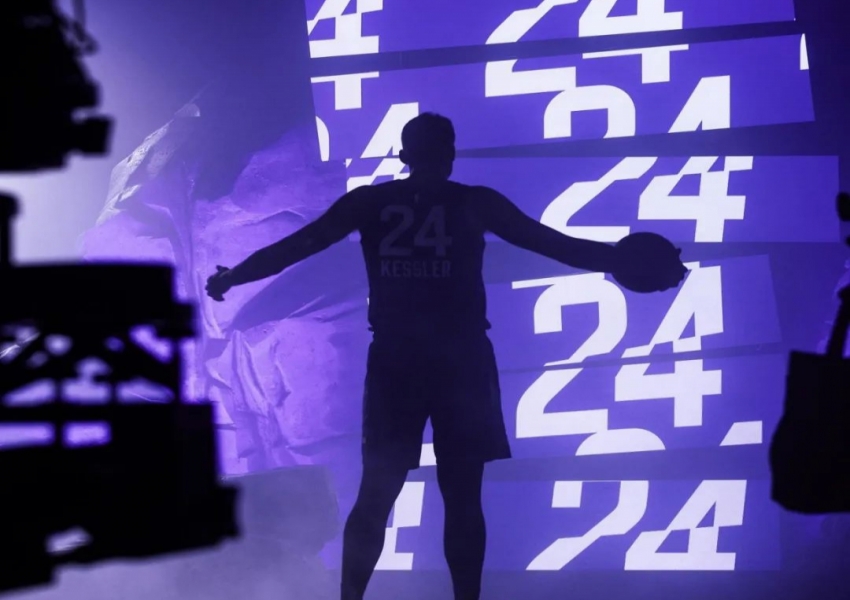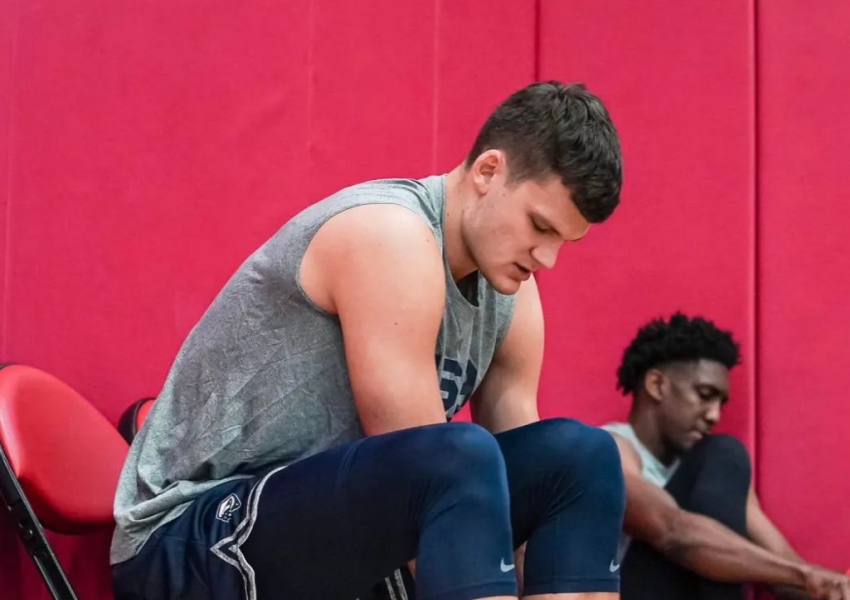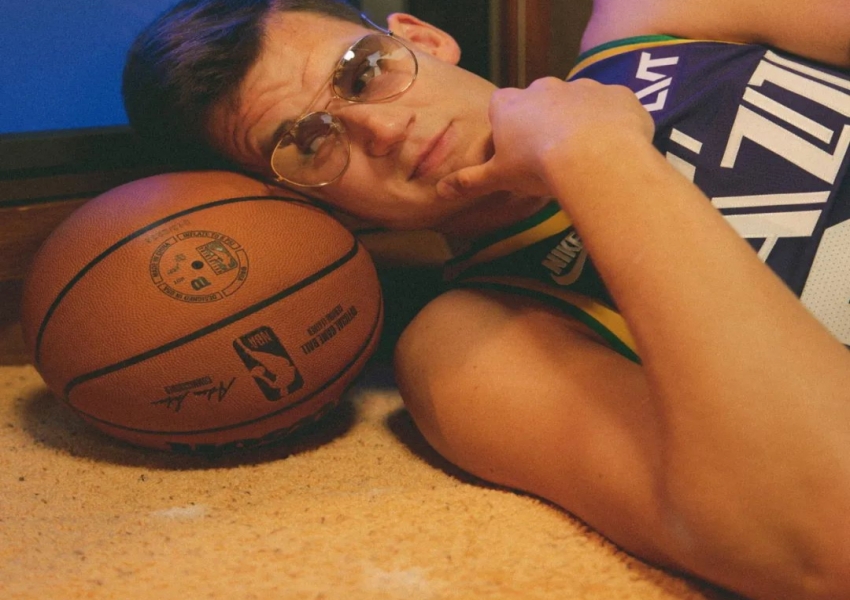8+7 Per Game, Worth Two First-Rounders? Is 23-Year-Old Walker Kessler Really Worth the Price?
The New York Knicks have made headlines once again, this time for their pursuit of Utah Jazz center Walker Kessler. According to insider Marc Stein, the Knicks explored multiple avenues to acquire Kessler as they sought to fill a hole in their frontcourt before ultimately pulling the trigger on a deal to acquire Karl-Anthony Towns. Kessler, a young, defensive-minded center with an intriguing upside, was seen as a potential fit. However, the Jazz’s steep asking price—reportedly at least two first-round picks—was too high for the Knicks, who have already exhausted a substantial amount of their draft capital in previous trades.

At first glance, New York’s pursuit of Kessler made sense. After losing backup center Isaiah Hartenstein in free agency and with Mitchell Robinson struggling to recover from ankle surgery, the Knicks needed to add depth at the position. Kessler, with his shot-blocking ability and defensive presence, seemed like a natural fit to address these needs. But the reported demand of two first-round picks for a player who averaged 8.1 points and 7.5 rebounds in his sophomore season raises questions. Is Kessler really worth that kind of investment?

Kessler’s Early Success and Initial Hype
Walker Kessler, the 22nd overall pick in the 2022 NBA Draft, entered the league without much fanfare, given his late first-round selection. But the 7-foot-1 center quickly turned heads during his rookie season. Playing 74 games, starting 40 of them, Kessler averaged 9.2 points, 8.4 rebounds, and 2.3 blocks per game while shooting a staggering 72.0% from the field. His height (2.13 meters) and wingspan (2.29 meters) made him a force around the basket, both as a rim protector and a lob threat.

Kessler's game is reminiscent of a traditional big man, thriving in the paint on both ends of the floor. In high school, he was ranked among the top 20 prospects in the nation, and by his sophomore year in college, he was averaging 11.4 points, 8.1 rebounds, and an eye-popping 4.6 blocks per game. His defensive prowess, highlighted by his ability to block shots and dominate the paint, earned him two triple-doubles with blocks during his college career—an indicator of his immense potential on the defensive end.
Offensively, Kessler excelled at finishing around the basket, largely through putbacks and dunks, thanks to his size and positioning. Defensively, he showcased maturity beyond his years, often anchoring his team's defense with his elite shot-blocking and rebounding ability. These skills earned him a spot on the NBA All-Rookie First Team and third place in Rookie of the Year voting. His outstanding debut season put Kessler on the map, and by the end of it, he had become a fan favorite, drawing comparisons to Rudy Gobert, the three-time Defensive Player of the Year. In fact, the Jazz had acquired Kessler’s draft rights in the Gobert trade with the Minnesota Timberwolves, a deal that some critics argued the Jazz won given Gobert’s decline and the package Utah received in return.
Did Kessler Plateau in His Sophomore Year?
Following a stellar rookie campaign, expectations were high for Kessler’s second year in the league. But by the end of the 2023-24 season, it was clear that his performance hadn’t met those lofty hopes. Kessler’s stat line of 8.1 points, 7.5 rebounds, and 2.4 blocks per game was solid, but a noticeable drop in both scoring and rebounding from his rookie numbers raised concerns.
While his block numbers still ranked second in the league, Kessler's offensive output regressed. His field goal percentage dropped from 72.0% to 65.4%, and his attempts to expand his game by adding a three-point shot were largely unsuccessful—he made just 4 of 19 from beyond the arc. His free throw shooting also remained poor, with percentages of 51.6% in his rookie year and 60.2% in his sophomore season.
One of the biggest red flags was Kessler’s lack of development as an all-around player. He remained heavily reliant on catching lobs and finishing around the rim. In today’s NBA, where centers like Nikola Jokić and Joel Embiid can initiate offense and stretch the floor, a player like Kessler, who is purely a rim protector and roll man, can start to look one-dimensional. Defensively, he struggled when switched onto quicker players, and teams began exploiting his lack of lateral quickness. His increased weight, intended to help him battle stronger big men, seemed to slow him down on both ends of the court.
Despite his physical gifts and defensive capabilities, Kessler’s sophomore season suggested that he might not have the upside many had hoped for after his breakout rookie year. His limitations on offense and in perimeter defense became more apparent, and he didn’t take the step forward that many anticipated. It’s this lack of progress that makes Utah’s asking price of two first-round picks for Kessler seem steep.
The Knicks’ Dilemma
For the Knicks, giving up two first-round picks for a player like Kessler would be a significant gamble. While the Knicks are in need of a reliable big man to complement their roster, especially with Robinson’s health concerns, they are also a team looking to build sustainably for the future. Sacrificing multiple first-rounders for a player who hasn’t shown major improvement in his second year is risky, particularly when the Knicks have already used a large portion of their draft capital in recent trades.
Kessler’s age (23) and affordable rookie contract are certainly appealing. The NBA places a premium on young, cost-effective talent, especially for teams that are strapped against the salary cap like the Knicks. But at this stage in his career, Kessler is more of a project than a sure thing. His primary strengths—shot-blocking and rebounding—are valuable, but his inability to contribute significantly on the offensive end or guard smaller, quicker players on defense limits his overall impact.
If Kessler can develop a more well-rounded game, perhaps by improving his shooting and mobility, his value would skyrocket. But that’s a big "if." Right now, Kessler looks more like a specialist, a traditional big man who excels in certain areas but may struggle to stay on the floor in modern, fast-paced NBA games. Betting two first-round picks on that potential improvement seems excessive for a Knicks team that is trying to build a championship contender.
Danny Ainge’s Negotiation Tactics
It’s no secret that Jazz general manager Danny Ainge is one of the NBA’s savviest negotiators. Known for maximizing the value of his players in trades, Ainge has earned a reputation for holding out for the best possible deal, and his handling of the Gobert trade is a prime example. The Jazz received a king’s ransom for Gobert, including five first-round picks, in a trade that has been widely criticized in hindsight given Minnesota’s struggles since acquiring the former Defensive Player of the Year.
It should come as no surprise, then, that Ainge is demanding a hefty return for Kessler, a player who still has potential despite his sophomore struggles. Even though Kessler hasn’t made the leap some expected, Ainge knows that defensive-minded centers like Kessler are valuable assets, especially in a league where rim protection remains a premium skill.
If Kessler can add a reliable jump shot to his game, there’s a good chance that he could command more than two first-round picks by the time the next trade deadline rolls around. After all, Gobert’s trade fetched five first-rounders, despite his decline in recent years. Ainge is likely banking on Kessler’s potential and the fact that centers with his size and defensive ability are rare commodities in today’s game.
For now, though, the Knicks seem to have passed on the opportunity to acquire Kessler at Utah’s current asking price. And while Kessler’s youth and defensive skills still make him an intriguing prospect, New York’s hesitation is understandable. Two first-round picks for a player who hasn’t yet lived up to expectations is a steep price to pay, especially when the Knicks are still looking to build for the future.
Copyright Statement:
Author: focusnba
Source: FocusNBA
The copyright of this article belongs to the author. Reproduction is not allowed without permission.
Recommended Blog
- Injury-Prone Again! Can Malcolm Brogdon Be the Missing Piece for a Championship in His Contract Year?
- It's Official! Zhang Zhenlin to Miss CBA Games — China's Best Forward Temporarily Sidelined
- Frustration Grows: Cui Yongxi’s Preseason Struggles, 0-4 Shooting, and a Teammate Hogging the Ball
- A Few Words, Two Teams Offended: Does Bradley Beal Want Out of the Suns?
- Explosive Start! Lakers Preseason Debut Reveals Two Surprises, Was the $32M Contract Worth It?
- Breaking News: Serious Wrist Injury! Exum's Fragile Career Takes Another Hit
- Born in 2004, Rim-Bending Power! More Explosive Than Zion? Pelicans Shaking Up the Western Conference Title Race
- 19 Minutes, 6 Three-Point Attempts! Westbrook Has Changed: Nuggets’ Championship-Level Signing
- It’s Confirmed! "Houston Harden" Mode Activated: Will James Harden Explode This Season?
- Explosive Debut! Zhao Weilin Drops 12 Points, 10 Assists: The Closest Chinese Guard to the NBA